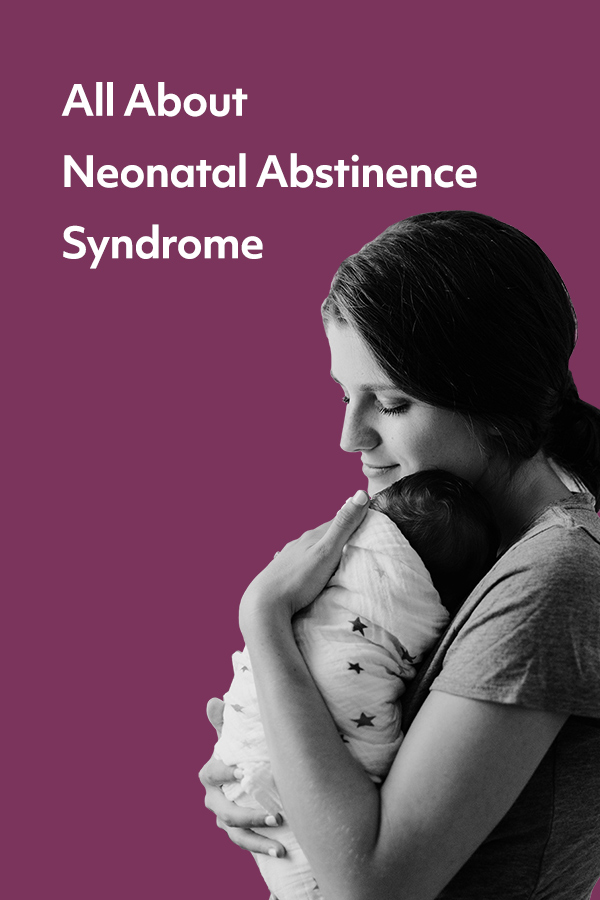Many pregnant people with substance use disorder, including those in medication-assisted treatment, worry about Neonatal Abstinence Syndrome. Here is a guide to help you understand this condition.
Neonatal Abstinence Syndrome (NAS) refers to a treatable condition that can occur in newborn babies that have been exposed to substances during pregnancy. NAS doesn’t have one single, easy-to-describe symptom, but presents as a cluster of symptoms that vary depending on the substance use and age of the newborn.
This guide explains NAS in more detail, baby withdrawal symptoms, its long-term effects, some common misconceptions like babies being born addicted to drugs, and resources you can turn to for more information.
What is Neonatal Abstinence Syndrome?
According to the Centers for Disease Control and Prevention (CDC), Neonatal Abstinence Syndrome (NAS) is a withdrawal syndrome that can occur in newborns when exposed to substances, like opioids, during pregnancy. When born, babies can then experience withdrawal symptoms, which vary depending on a number of factors, such as the substance used, when it was last taken, and the age of the baby (i.e. whether it is full-term or premature).
While NAS can also be caused by repeated exposure to barbiturates, benzodiazepines, and alcohol, in the United States, chronic opioid use is the most common source of Neonatal Abstinence Syndrome
What causes NAS?
Neonatal Abstinence Syndrome is caused by exposure to substances before birth. The substances pass through the placenta directly to the fetus.
While NAS is most common in opioid use, it can occur with other substances. The type of opioid that was used has an impact on the severity of NAS symptoms experienced.
According to the American College of Obstetricians and Gynecologists (ACOG) and the American Society of Addiction Medicine (ASAM), untreated heroin dependence during pregnancy may increase the risk of growth abnormalities, the premature separation of the placenta from the uterus, preterm labor, and death—these risks may be associated with withdrawal experienced between doses of heroin.
Substance use disorders are highly stigmatized and have been associated with less positive outcomes. NAS is also associated with significant stigmatization. Research shows that NAS is associated with victimization, judgment, scrutiny, and lack of prenatal care. Stigma is a significant barrier to treatment for pregnant individuals as many people fear that self-disclosing may lead to punitive policy measures.
In 2013, medical experts wrote to news outlets, pointing out that the way they have sensationalized NAS by using phrases such as “drug-addicted babies” (which is medically inaccurate) reinforces stigma. While babies may experience physiological dependence, they do not exhibit the other symptoms associated with substance use disorders.
How common is NAS?
The CDC indicates that in 2014, in the United States, a baby was born with Neonatal Abstinence Syndrome every 15 minutes. However, this figure largely relies upon hospital discharge data. This may be somewhat misleading, as NAS is not universally tracked. But what they do know is that this figure is a 433 percent increase over a decade, from 1.5 babies with NAS per 1,000 hospital births in 2004 to 8.0 per 1,000 hospital births in 2014.
The National Survey on Drug Use and Health showed that 0.9 percent of pregnant women meet the criteria for opioid dependence on opioid pain medication and 0.2 percent on heroin. From 2002-2012, treatment admissions for pregnant women with opioid use disorder increased by 124% in the publicly funded treatment system. However, this doesn’t include data from privately funded treatment providers. These numbers don’t give us hard data on the frequency of NAS occurrence, but they do help to paint the picture.
What are the symptoms of NAS?
There are a number of effects and symptoms of NAS that occur in-utero (during pregnancy) and upon birth, and there may be longer-term effects.
Symptoms of NAS can occur as soon as 24-48 hours after birth but may take as long as 5-10 days to appear. As mentioned above, the intensity and type of symptoms a baby experiences as part of NAS depends on the type of substance and when it was last used, and whether the baby was born prematurely or full-term. Generally speaking, however, common NAS symptoms experienced by full-term babies include:
- High-pitched crying/crying more than usual
- Difficulty settling/calming
- Trembling
- Seizures
- Sleeping difficulties, which may last from days to weeks
- Tight muscles
- Sweating
- Vomiting
- Diarrhea
- Fever
- Yawning/stuffy nose
- Overactive reflexes
According to Stanford Children’s Health, premature babies are at a lower risk of withdrawal symptoms or may experience less severe symptoms. They are also thought to improve more quickly as they may have been exposed to less of the substance than babies carried to full-term.
How is NAS treated?
Both ASAM and ACOG recommend the use of medication-assisted treatment (MAT) for pregnant women with opioid use disorders. MAT, which may include methadone or Suboxone, provides stabilization and prevents withdrawal symptoms. It is not recommended that pregnant people go through medically supervised withdrawal or abrupt withdrawal through stopping cold turkey, given the risks to the fetus.
In babies with NAS, the American Academy of Pediatrics recommends newborns receive treatment that includes breastfeeding, gentle handling and swaddling, and treating infants in a quiet, dark environment. In more severe cases when the above approaches have not worked, medication may be used such as morphine or methadone.
Neonatal Abstinence Syndrome long-term effects
Studies have shown that NAS can abate quickly. However, there may be some longer-term effects such as vision, motor, and behavioral problems, sleep disturbances, and ear infections. The pediatrician of a child with NAS should be informed so that they know to monitor and make appropriate referrals.
NAS Resources
- The Substance Abuse and Mental Health Services Administration (SAMHSA) guide for the treatment of pregnancy with opioid use disorder.
- Harm Reduction Coalition: Pregnancy and Substance Use: A Harm Reduction Toolkit





